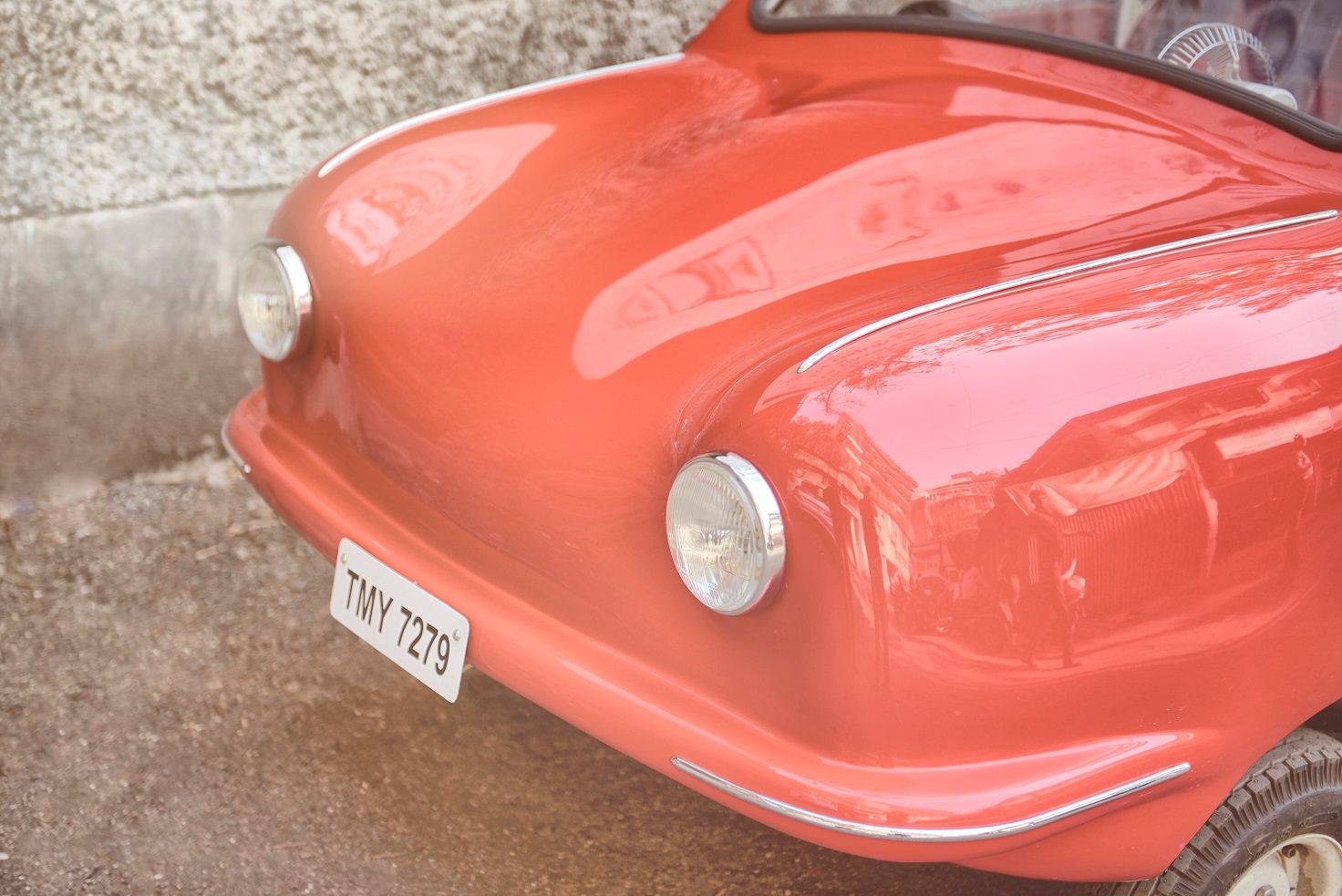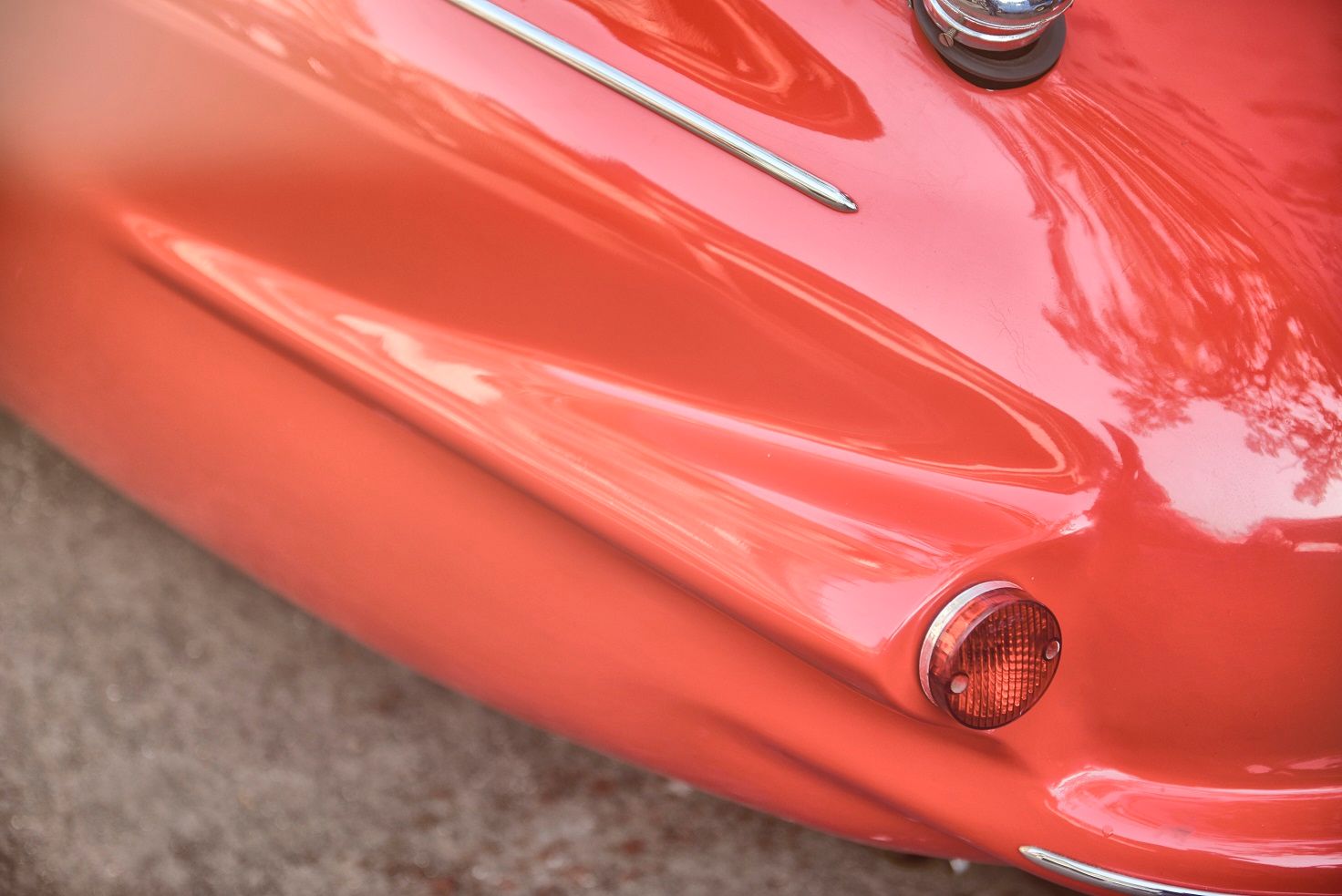India’s First Three-Wheeler Micro Car, The Scootacar Belongs In A Museum
Images: Makarand Baokar
Fun fact: This three-wheeler Scootacar was made in India. Even though chances are you’ve never seen anything like this, here is a vehicle that is not only a fascinating footnote in India’s automotive history, but one that is worthy of being an exhibit in a museum. This vehicle is also a very intriguing representation of a certain epoch in automotive history.
Post WWII, when demand for inexpensive personal transportation was on the rise, resource constraints and the lack of money led engineers in Germany and Italy to come up with a whole host of innovative and inexpensive micro cars. The most famous of them was the Italian Isetta, which was also built in Germany, under license by BMW.
The BMW 600, a slightly bigger four-seater derivative of the Isetta, was offered to Hindustan Vehicles Limited, a sister concern of Hindustan Motors. This was in the late 1950s, when the Indian government was toying with the idea of giving away additional licences for the manufacture of a “people’s car.”

Another German vehicle manufacturer, Tempo, which had inked a technical collaboration with Bajaj Tempo Ltd (which became Force Motors eventually), had also developed a micro car, along the lines of the BMW-Isetta, but prettier. And a Bombay-based company, Associated Corporation of Industries (India) Private Limited (ACI), had also “submitted to the Government of India a manufacturing programme” for the German Goggomobil, another two-door, four-seater micro car, with a twin-cylinder engine (located at the rear) powering the car. There is at least one known indigenous effort, which was the Meera, a tiny three-door four-seater designed by Shankarrao Kulkarni, of Ichalkaranji. But none of these projects went beyond the prototype stage.
Scootacar Private Limited, however, was registered in Renigunta, Tirupati, in December 1971, and the vehicle on these pages must have been produced soon after, in 1972 perhaps. The license for the design and the moulds of the body must have been acquired from either Elektromaschinenbau Fulda GmbH or Nordwestfischer Fahrzeugbau (NWF), whichever was the legal entity in 1969. Fulda was one of several little “bubble cars”, which had become very popular in post-War Germany, during the 1950s.

Conceived by German journalist Norbert Stevenson in 1950 and designed initially as a three-wheeler (a four-wheeled version was also available later), the production of the Fuldamobil began in 1951. Initially the body was made of plywood, with a coating of artificial leather. From 1952, an angular aluminium body was used. In '57, with the use of fibreglass, the body became more rounded and aerodynamic. Though it had one of the longest production runs for a micro car—from 1951 to 1969—less than 3,000 were made in Germany.
Internationally though, the Fuldamobil was a redoubtable success: it was licensed for manufacture as the Nobel in Chile and the UK, Bambi in Argentina, Bambino in The Netherlands, Fram King Fulda in Sweden, and the Attica and Alta in Greece. In India, Scootacar was the one that seems to have purchased the license.
Although the branding of Hans Vahaar has been mentioned, there is no clear evidence of that on the car on this page. The differences between the ‘original’ Fuldamobil and the Scootacar are very minor, barring the most prominent change: powering the three-wheeler is a Villiers engine, versus the Sachs of the original. The single-cylinder Villiers engine (mated to a four-speed sequential gearbox) made sense as it was being manufactured in India and was being used by Enfield India for their scooter and bike models, the Fantabulus and the Sherpa. Switchgear was from other Indian cars of the 1970s, the handles and locks came from Fiat, the wheels were from a Bajaj auto rickshaw, and the headlamps from the Lambretta scooter. The glasses, which are specific to the vehicle, are stamped Atultuf, which corroborates that the car was indeed made in India.

“Rediscovered” by Karl Bhote and Kaizad Engineer in 2016 when they saw an online classified, from a broker, who had bought it from the original owners’ son in Jamnagar, this surviving Scootacar is, in all probability, one of a handful of pre-production vehicles made before the company went bust. A photograph from yesteryear shows several empty shells of Fuldamobils somewhere in India… fortunately, this one was completed. And it has survived to tell its tale in the Gedee Car Museum, in Coimbatore.
Comments
Sign in or become a deRivaz & Ives member to join the conversation.
Just enter your email below to get a log in link.
